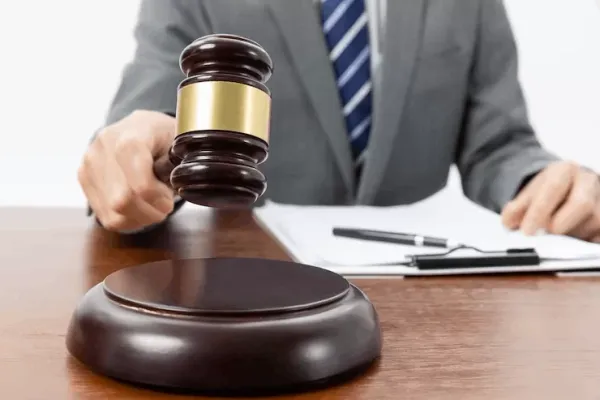The Path to Removal: Understanding the Impeachment Procedure for High Court Judges in India, in Light of Justice Varma’s Case

Author: Anand Dhakad, Law Student, National University of Study and Research in Law, Ranchi
INTRODUCTION
The Indian judiciary as the foundation of our democratic principles, operates on the principles of independence and accountability. These two pillars are always in a delicate balance, especially when allegations like impropriety arise against ones who uphold the law. The case today has been of high interest when the in-house inquiry report against Justice Yashwant Varma of the high court Allahabad was made, which was further recommended to be impeached and also when he challenged it before the Supreme Court.
This is not merely a legal battle but a critical moment that highlights the rigorous constitutional procedure involved in removing a High Court judge; an extremely extraordinary and sacred business, bestowing protection of independence of the judiciary and accountability to the judiciary.
The Grounds for Removal: “Proved Misbehaviour” or “Incapacity”
Removal of a High Court judge is a power that cannot be exercised lightly. It is embedded in the Indian Constitution, the provisions of Article 124(4) and 124(5), which primarily govern the procedure of removing Supreme Court judges, and which, by means of the Article 218 of the Constitution, are extended to the High Court judges. These articles lay down only two permissible grounds for removal: "proved misbehaviour" or "incapacity."
Proved misbehaviour is not a term specifically set out in the Constitution, but the judiciary pronouncements and the interpretation of the law in this respect has elucidated it. It incorporates the acts that gravely undermine the dignity, authority, and impartiality of the judiciary. This may involve corruption, abusing office, flouting judicial ethics, or any type of activity that brings disrepute to the judicial institution. In the context of Justice Varma's case, the allegations of unaccounted cash recovery would definitely be within this category, and could amount to the misbehaviour as the phrase has come to be understood, namely, “proved misbehaviour.”
Incapacity, however, is a removal of a judge because of the inability to discharge his judicial functions on account of physical or mental illness. This ground recognizes the fact that a judge may not be able to attend his duty due to grave health complications and in such instances, removal of the judge might become inevitable in a bid to establish the smooth working of the judicial system.
The Impeachment Procedure: A Step-by-Step
The actual procedure for the removal of a judge is laid out in The Judges (Inquiry) Act, 1968. This Act offers a thorough structure that guarantees openness and due process.
1. Initiation of Motion: The procedure of bringing in a motion of removal in the Parliament starts with the introduction by a member either in the Lok Sabha or the Rajya Sabha. To file the motion, it must be signed by at least 100 members in Lok Sabha or 50 members in the Rajya Sabha so that it may be admitted. This prerequisite makes sure that only the proposals that are considerably supported are pursued, which acts as a protection measure against unwarranted or politically inclined efforts. However, Current reports say that Congress together with the other Members of Parliament, are busy signing to present a motion against Justice Varma in the upcoming Monsoon Session of Parliament.
2. Scrutiny by the Presiding Officer: After the motion is received, it then goes to the Speaker of Lok Sabha or the Chairman of the Rajya Sabha, whichever house the motion was presented. The presiding officer, then, has discretionary power that is critical of accepting the motion or disallowing it. This is a vital protection, and its purpose is to exclude frivolous or otherwise without merit attempts to amend the Bill; to save the time of Parliament. In the case of Justice Varma, with all the political consensus and with the decision of the in-house committee, it has been reported that the motion will mostly pass to be further considered.
3. Formation of Inquiry Committee: In case the motion is granted, the Speaker of the Lok Sabha or the Chairman of the Rajya Sabha will constitute a three-member inquiry to get the facts at depth about the charges made. The assembly of this committee is also legally mandate to consist of Supreme Court judge, the Chief Justice of a High Court, and a distinguished jurist. The findings of a prior in-house inquiry committee, which has already submitted its report regarding Justice Varma, become central to the recommendation on impeachment. The internal judicial proceedings, their outcomes, and Justice Varma’s subsequent challenge to the fairness of the process are now at the heart of public debate.
4. Inquiry Process: The inquiry committee conducts a thorough investigation into the allegations laid out against the judge. As part of this process, it formulates specific charges and gives the judge a fair opportunity to present a written statement in their defense. The accused judge is also entitled to examine and cross-examine witnesses, ensuring procedural fairness. Upon completing its inquiry, the committee submits its findings to the Speaker or Chairman. If the committee determines that the judge is not guilty, the motion lapses and no further action is taken
5. Parliamentary Debate and Voting: If the inquiry committee finds the judge guilty of "proved misbehaviour" or "incapacity," the motion, along with the committee's report, is brought before the House where the motion originated for debate. At this critical juncture, the judge or their legal representative is entitled to address Parliament, ensuring their right to be heard before the nation’s legislators. For the motion to pass, it must secure a "special majority" in both Houses of Parliament, this means it requires support from a majority of the total membership of each House and at least two-thirds of the members present and voting. If one House approves the motion by this special majority, it is sent to the other House, where it follows the same procedure, including a debate and another vote by special majority.
6. Presidential Order: Only after both Houses of Parliament adopt the motion with the required special majority is it forwarded to the President of India. At this stage, the constitution requires the President to give an order that triggers the removal of the judge hence ending the entire process of impeachment.
Conclusion
The impeachment procedure to remove a judge of the High Court in India is deliberately long, drawn out and complex, to satisfy national ideals of both accountability and a free judiciary. The case of Justice Yashwant Varma that is still developing, where huge volumes of burnt money have been found in his official place of residence after a house fire in March 2025, provoked a high-profile and debatable constitutional procedure.
The case of justice Varma is becoming an instant challenge to the judicial accountability structure in India. As Parliament prepares to debate the motion, the ongoing scrutiny by both the judiciary and lawmakers, alongside Justice Varma’s challenge against the internal mechanisms, places the foundational questions of due process, separation of powers, and institutional trust under the national spotlight. Not only will the verdict decide the final destiny of Justice Varma, it will also have a bearing on the questions of how judicial conduct and parliamentary oversight are handled in the future.
To update yourself with LegalNews, visit legalwiki.co
References
1. https://ijlmh.com/paper/independence-of-judiciary-in-india/
3. https://prsindia.org/theprsblog/explainer-removal-of-judges-from-office
8. https://www.indiacode.nic.in/bitstream/123456789/1539/2/A1968-51.pdf




